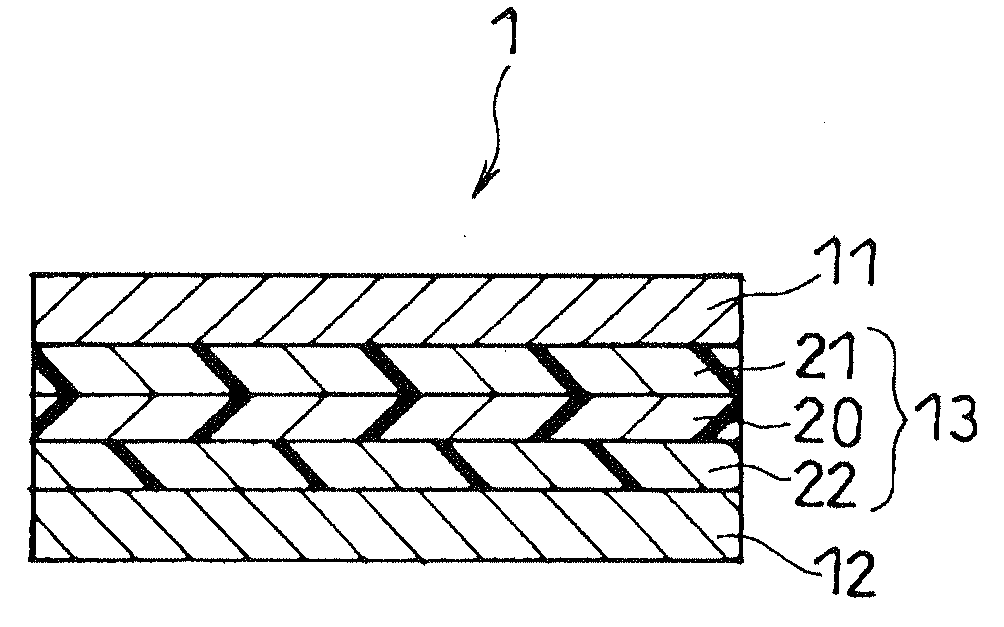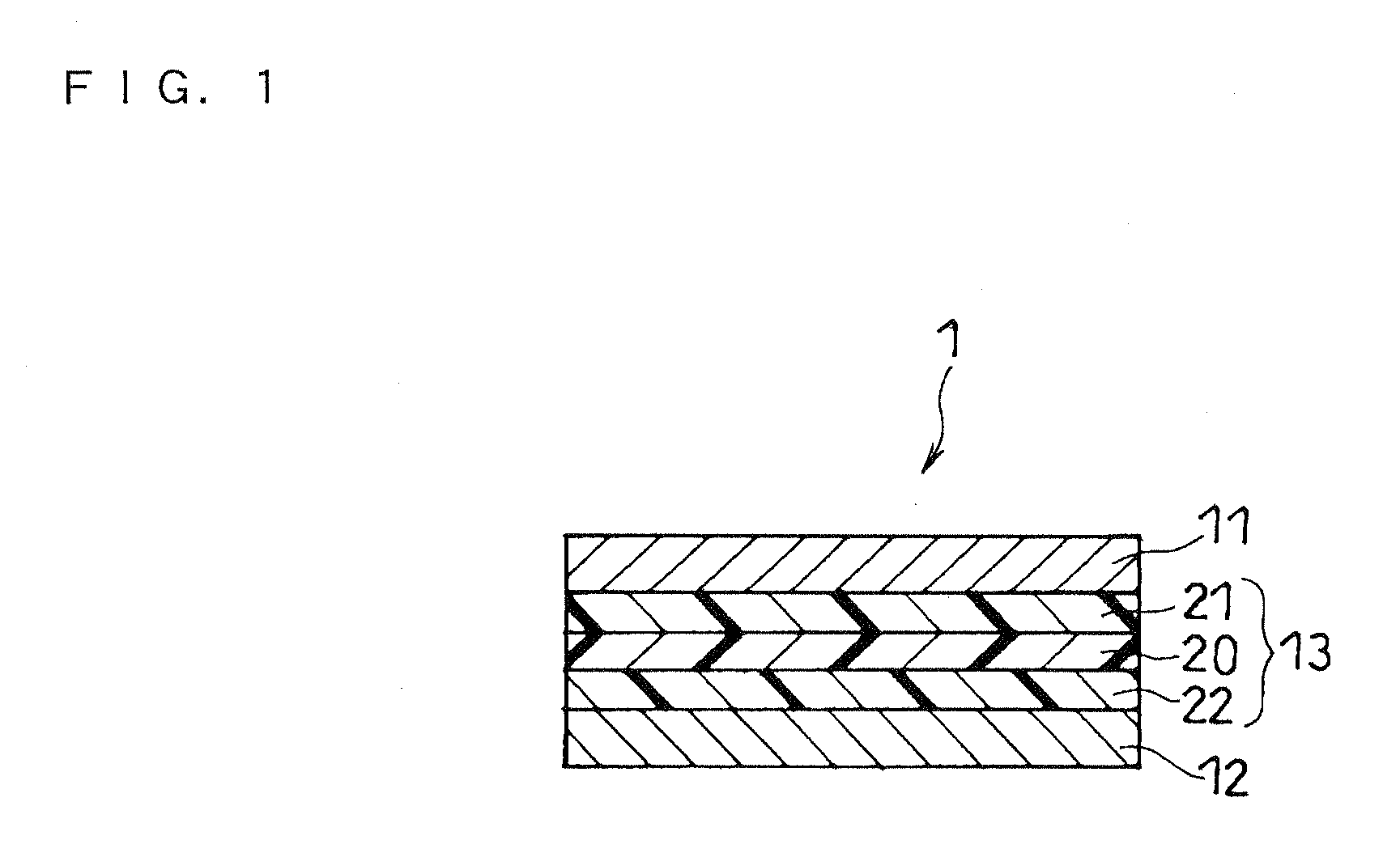Separator for lithium secondary battery, method for producing the same, and lithium secondary battery including the same
a lithium secondary battery and separator technology, applied in the direction of cell components, electrochemical generators, cell component details, etc., can solve the problems of internal short circuit, overheating of the battery, and undesirable porous film melting and shrinking,
- Summary
- Abstract
- Description
- Claims
- Application Information
AI Technical Summary
Benefits of technology
Problems solved by technology
Method used
Image
Examples
example 1
[0056](i) Preparation of Positive Electrode
[0057]A positive electrode paste was prepared by mixing and stirring 3 kg of lithium cobaltate, 1 kg of PVDF (trade name: #1320, available from Kureha Corporation, NMP solution with a solid content of 12% by weight), 90 g of acetylene black, and a suitable amount of NMP with a double-arm kneader. This positive electrode paste was intermittently applied onto a 15-μm-thick aluminum foil, dried, rolled, and slit to a width of 57 mm, to obtain a 150-μm thick positive electrode.
(ii) Preparation of Negative Electrode
[0058]A negative electrode paste was prepared by mixing and stirring 3 kg of artificial graphite, 75 g of styrene-butadiene copolymer rubber particles (trade name: BM-400B, available from Zeon Corporation, binder with a solid content of 40% by weight), 30 g of carboxymethyl cellulose, and a suitable amount of water with a double-arm kneader. This negative electrode paste was intermittently applied onto a 10-μm thick copper foil, dried...
example 2
[0061]A lithium secondary battery of the present invention was produced in the same manner as in EXAMPLE 1, except that the separator was produced as follows.
[0062]Dry anhydrous calcium chloride of 6.5 parts by weight was added to 100 parts by weight of NMP, and dissolved completely by heating in a reaction vessel. The resultant NMP solution containing calcium chloride was allowed to cool to room temperature, and 3.2 parts by weight of paraphenylene diamine was added thereto and dissolved completely. This reaction vessel was placed in a 20° C. constant temperature oven, and 5.8 parts by weight of terephthalic acid dichloride was dropped into the NMP solution in 1 hour to synthesize polyparaphenylene terephthalamide (hereinafter “PPTA”) via polymerization reaction. Thereafter, the reaction vessel was left in the constant temperature oven for 1 hour. After the completion of the reaction, the reaction vessel was transferred to a vacuum chamber, where the resultant solution was stirred ...
example 3
[0063]A lithium secondary battery of the present invention was produced in the same manner as in EXAMPLE 1, except that the separator was produced as follows.
[0064]An NMP solution of polyamic acid (polyamic acid concentration 3.9% by weight) was prepared by mixing 100 parts by weight of NMP, 2.1 parts by weight of pyromellitic dianhydride, and 2.0 parts by weight of diaminodiphenylether at room temperature. In the resultant NMP solution of polyamic acid was dispersed 200 parts by weight of the same alumina as that of EXAMPLE 1 per 100 parts by weight of polyamic acid, to prepare a coating liquid. This coating liquid was applied onto an SUS substrate with a bar coater, and dried with hot air of 80° C. (flow rate 0.5 m / sec), to obtain a coating film of a polyimide precursor. This coating film was removed from the substrate, drawn, and heated at 300° C. to cause dehydration and imidization, to obtain a 3-μm thick heat-resistant porous film of polyimide. A 12-μm-thick porous polyethylen...
PUM
| Property | Measurement | Unit |
|---|---|---|
| thickness | aaaaa | aaaaa |
| porosity | aaaaa | aaaaa |
| thickness | aaaaa | aaaaa |
Abstract
Description
Claims
Application Information
 Login to View More
Login to View More - R&D
- Intellectual Property
- Life Sciences
- Materials
- Tech Scout
- Unparalleled Data Quality
- Higher Quality Content
- 60% Fewer Hallucinations
Browse by: Latest US Patents, China's latest patents, Technical Efficacy Thesaurus, Application Domain, Technology Topic, Popular Technical Reports.
© 2025 PatSnap. All rights reserved.Legal|Privacy policy|Modern Slavery Act Transparency Statement|Sitemap|About US| Contact US: help@patsnap.com


